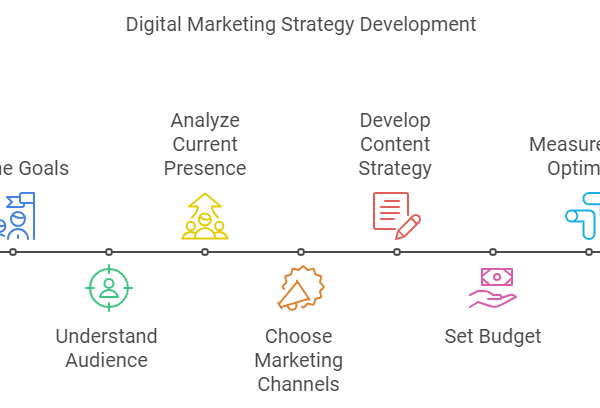
In the world of marketing, language is everything. The words chosen, the way they are arranged, and the techniques used can determine the success or failure of a campaign. Language techniques in marketing are designed to grab attention, evoke emotions, and drive action. This article will explore how various language techniques are used in marketing to influence consumer behavior.
1. The Science of Persuasion: How Language Influences Buying Decisions
Marketing is all about persuasion, and language is one of the most powerful tools available. The words used in marketing materials can influence how consumers think and feel about a product or service.
Techniques in Persuasive Language:
- Scarcity: Words like “limited time” or “only a few left” create a sense of urgency.
- Social Proof: Phrases like “best-selling” or “most popular” suggest that others are choosing this product, which can influence individual decisions.
- Authority: Using expert opinions or quotes (e.g., “Doctor recommended”) adds credibility.
Table: Persuasive Techniques and Their Applications
| Technique | Description | Example |
|---|---|---|
| Scarcity | Creates urgency by limiting availability | “Hurry, offer ends soon!” |
| Social Proof | Leverages the behavior of others to influence actions | “Join millions of happy customers” |
| Authority | Uses expert or celebrity endorsement | “As recommended by dentists” |
2. Creating Emotional Connections: The Role of Language in Brand Loyalty
Emotional connections are the bedrock of brand loyalty. The language used in branding and advertising plays a significant role in forming these connections.
Emotional Triggers:
- Nostalgia: Language that evokes memories or past experiences (e.g., “Just like grandma used to make”).
- Fear: Words that highlight potential risks or dangers (e.g., “Don’t miss out on protection”).
- Aspiration: Language that appeals to desires and goals (e.g., “Achieve your dreams”).
Table: Emotional Triggers in Branding
| Emotion | Triggering Language | Example |
|---|---|---|
| Nostalgia | Evokes fond memories | “Classic taste, timeless tradition” |
| Fear | Highlights risks or dangers | “Don’t get left behind” |
| Aspiration | Appeals to goals and desires | “Unlock your potential” |
3. The Use of Power Words: Triggering Immediate Responses
Certain words have the power to trigger immediate reactions from consumers. These “power words” are often used in headlines, calls to action, and product descriptions.
Examples of Power Words:
- Free: People are naturally attracted to getting something for nothing.
- Exclusive: Implies that the offer is special or limited to a select group.
- Guaranteed: Provides reassurance and reduces perceived risk.
Table: Power Words and Their Impact
| Power Word | Impact | Example |
|---|---|---|
| Free | Attracts attention by offering value | “Get your free trial today” |
| Exclusive | Creates a sense of privilege | “Exclusive offer just for you” |
| Guaranteed | Reduces risk, increases trust | “Satisfaction guaranteed or your money back” |
4. Storytelling in Advertising: The Secret to Memorable Campaigns
Storytelling is a powerful technique in advertising because it humanizes a brand and makes the message more relatable and memorable.
Elements of Effective Storytelling in Ads:
- Relatable Characters: Create characters that reflect the target audience’s experiences.
- Conflict: Introduce a problem or challenge that the product or service can solve.
- Resolution: Show how the product or service resolves the issue, leading to a happy ending.
Examples of Storytelling in Ads:
- Nike: Often uses stories of athletes overcoming challenges to inspire and connect with their audience.
- Coca-Cola: Frequently uses narratives that evoke happiness and togetherness, linking their brand with positive emotions.
5. Practical Tips for Marketers: Crafting Effective Messages
Now that we’ve explored various language techniques how can marketers apply these to their campaigns?
Actionable Tips:
- Use Clear and Concise Language: Avoid jargon and complex sentences; simplicity sells.
- Incorporate Emotional Appeals: Identify the primary emotion you want to evoke and tailor your language accordingly.
- Test Different Messages: Use A/B testing to determine which language resonates most with your audience.
- Focus on the Customer: Use language that speaks directly to the customer’s needs and desires.
Table: Quick Tips for Marketers
| Objective | Technique | Example |
|---|---|---|
| Increase Conversions | Use Power Words in CTAs | “Act now! Limited offer!” |
| Build Brand Loyalty | Focus on Emotional Connections | “Join our family of satisfied customers” |
| Enhance Brand Image | Use Storytelling in Campaigns | “Discover the journey to success with us” |
Conclusion
Language techniques in marketing are more than just tools; they are the key to unlocking consumer engagement, driving action, and building lasting brand loyalty. By understanding and applying these techniques, marketers can create messages that not only reach their audience but resonate deeply with them.
What is the difference between positive and negative framing?
Positive framing highlights beneficial aspects of an issue or event (e.g., “job creation is on the rise”), while negative framing focuses on detrimental aspects (e.g., “unemployment rates are soaring”).
Can you give examples of how dialogue is used to develop characters?
Dialogue reveals character traits and personalities through their speech patterns, word choices, and interactions. For example, a character who speaks formally might be portrayed as educated and reserved, while informal speech may indicate a more casual or rebellious nature.
What are emotional appeals in media, and why are they used?
Emotional appeals use language that evokes feelings such as fear, sympathy, or anger to influence the audience’s reactions and opinions. They are used to engage viewers and create a more compelling message.
How can sensationalism in headlines affect reader perception?
Sensationalism uses dramatic or exaggerated language to attract attention, which can skew the reader’s understanding of the actual content and provoke stronger emotional reactions.
What is the significance of active listening in negotiation?
Active listening involves fully concentrating on the speaker, understanding their message, and responding thoughtfully. It helps build rapport, uncover underlying issues, and reach mutually beneficial agreements.











